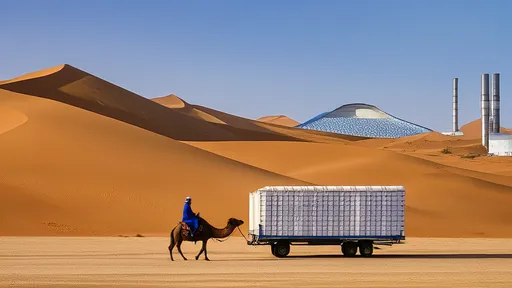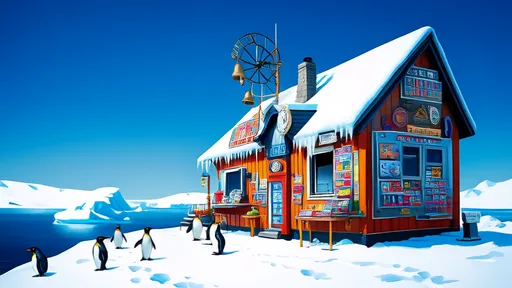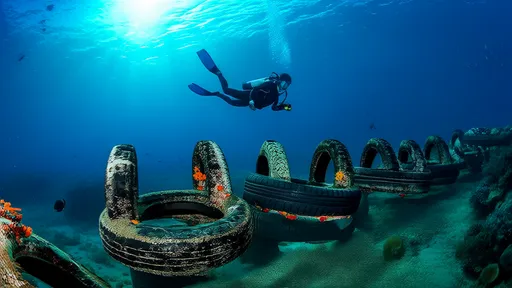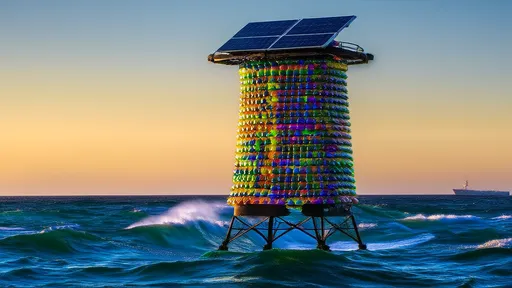At the bottom of the world, where ice stretches endlessly and temperatures plunge to unimaginable lows, an unexpected economic activity thrives—the postcard trade from Antarctica. The world’s southernmost post offices, operated by various national research stations, have become unlikely hubs of commerce, connecting the frozen continent with the rest of the globe through handwritten notes and stamped souvenirs. These outposts, though small in scale, sustain a unique micro-economy built on nostalgia, adventure, and the human desire to share experiences from the planet’s most remote corners.
The British-run Port Lockroy post office, perhaps the most famous of these operations, processes tens of thousands of postcards each year. Perched on Goudier Island, the tiny wooden shack serves as both a museum and a functioning postal base. Visitors—mostly tourists arriving by expedition ships—flock to send postcards bearing Antarctic postmarks, a ritual that has turned into a vital revenue stream for the UK Antarctic Heritage Trust. The proceeds fund conservation efforts and upkeep of historic sites, ensuring that the legacy of early explorers remains accessible to future generations.
What makes these postcards so valuable isn’t just their journey from the edge of the world, but the labor-intensive process behind their delivery. Mail from Antarctica often takes months to reach its destination, passing through multiple countries and hands. Ships carrying the postcards must brave the treacherous Drake Passage, where storms are frequent and waves can tower over 20 feet. Once the mail reaches the nearest continental port—usually in Argentina or Chile—it enters the global postal network, inching its way toward recipients who cherish these tangible pieces of polar wilderness.
The demand for Antarctic postcards has spawned a cottage industry. Artisans and designers collaborate with research stations to create limited-edition prints featuring penguins, icebergs, and historic expeditions. Collectors and philatelists eagerly seek out these rare items, sometimes paying premium prices at auctions. Even the postmarks themselves hold value; special cancellations for events like the winter solstice or the arrival of the first ship of the season are highly coveted. The scarcity of these artifacts only amplifies their allure, turning simple correspondence into prized possessions.
Beyond economics, the postcard trade serves a diplomatic purpose. Research stations from different nations—often isolated for months during the harsh winter—use mail exchanges as gestures of goodwill. A Russian base might send holiday greetings to a nearby American station, while Chilean staff dispatch souvenirs to their families back home. These small acts foster camaraderie in an environment where cooperation can mean the difference between life and death. The postcards, in their own way, become symbols of international solidarity in one of Earth’s most inhospitable regions.
Tour operators have capitalized on the phenomenon, offering "mail-in-advance" services where clients can pre-order postcards to be stamped and mailed during their Antarctic voyages. Some even provide tracking numbers, allowing senders to follow their postcard’s slow pilgrimage across oceans and continents. For many recipients, receiving mail from Antarctica is a surreal experience—a reminder that even in our digital age, the allure of handwritten messages from distant lands endures.
Critics argue that the environmental cost of shipping non-essential mail from such a fragile ecosystem warrants reconsideration. However, proponents counter that the postcard trade raises awareness about Antarctica’s importance while generating funds for its preservation. The carbon footprint of a single postcard, they note, pales in comparison to that of the tourist vessels already making the journey. Striking this balance between economic necessity and ecological responsibility remains an ongoing challenge for the organizations behind these postal operations.
As climate change threatens to reshape Antarctica’s landscape, the postcard economy faces an uncertain future. Melting ice may open new shipping routes, potentially increasing mail volume, while stricter environmental regulations could impose new restrictions. For now, though, the world’s southernmost post offices continue their quiet work—proof that even in the age of instant messaging, there’s still magic in waiting for a letter from the end of the Earth.

By /Jul 16, 2025

By /Jul 16, 2025

By /Jul 16, 2025

By /Jul 16, 2025

By /Jul 16, 2025

By /Jul 16, 2025

By /Jul 16, 2025

By /Jul 16, 2025

By /Jul 16, 2025

By /Jul 16, 2025

By /Jul 16, 2025

By /Jul 16, 2025

By /Jul 16, 2025

By /Jul 16, 2025

By /Jul 16, 2025

By /Jul 16, 2025

By /Jul 16, 2025

By /Jul 16, 2025